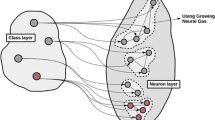Abstract
Human activity recognition (HAR) using wearable sensors has witnessed significant advancements in recent years. However, the traditional closed-set assumption restricts models to predicting only known activity classes. This limitation can be overcome by building models under the open-set recognition paradigm. Most existing methods mitigate the open-set risk by adjusting known class boundaries, but this approach overlooks the potential correlations between unknown classes and can lead to over-generalization, requiring more and higher-quality training data. This paper introduces the concept of reciprocal time series, which serves as the latent representation of the unknown class space for each known class. By comparing samples to these reciprocal time series, the model can classify them as either known or unknown. We propose a novel metric to measure temporal similarity within the embedding space. The constructed boundary space, formed by the reciprocal time series, facilitates the effective learning of inherent generalization features from a large number of unknown samples through multi-class interaction, ultimately reducing the open-set risk. Extensive experiments on three public sensor datasets demonstrate that our model surpasses existing methods on the open-set recognition task for sensor-based HAR, particularly excelling in recognizing unknown class instances.
Access this chapter
Tax calculation will be finalised at checkout
Purchases are for personal use only
Similar content being viewed by others
References
Duan, F., Zhu, T., Wang, J., et al.: A multi-task deep learning approach for sensor-based human activity recognition and segmentation. IEEE Trans. Instrum. Measur. (2023)
Wang, J., Zhu, T., Chen, L., et al.: Negative selection by clustering for contrastive learning in human activity recognition. IEEE Internet Things J. (2023)
Jain, L.P., Scheirer, W.J., Boult, T.E.: Multi-class open set recognition using probability of inclusion. In: Fleet, D., Pajdla, T., Schiele, B., Tuytelaars, T. (eds.) ECCV 2014. LNCS, vol. 8691, pp. 393–409. Springer, Cham (2014). https://doi.org/10.1007/978-3-319-10578-9_26
Tonmoy, M.T.H., Mahmud, S., Mahbubur Rahman, A.K.M., et al.: Hierarchical self attention based autoencoder for open-set human activity recognition. In: Karlapalem, K., et al. (eds.) PAKDD 2021. LNCS, vol. 12714, pp. 351–363. Springer, Cham (2021). https://doi.org/10.1007/978-3-030-75768-7_28
Lee, M., Kim, S.B.: Sensor-based open-set human activity recognition using representation learning with mixup triplets. IEEE Access 10, 119333–119344 (2022)
Li, J., Xu, H., Wang, Y.: Multi-resolution fusion convolutional network for open set human activity recognition. IEEE Internet Things J. (2023)
Chen, G., Peng, P., Wang, X., et al.: Adversarial reciprocal points learning for open set recognition. IEEE Trans. Pattern Anal. Mach. Intell. 44(11), 8065–8081 (2021)
Jin, L., Wang, X., Chu, J., et al.: Human activity recognition machine with an anchor-based loss function. IEEE Sens. J. 22(1), 741–756 (2021)
Chen, G., Qiao, L., Shi, Y., et al.: Learning open set network with discriminative reciprocal points. In: Vedaldi, A., Bischof, H., Brox, T., Frahm, J.M. (eds.) ECCV 2020. LNCS, vol. 12348, pp. 507–522. Springer, Cham (2020). https://doi.org/10.1007/978-3-030-58580-8_30
Goodfellow, I., Pouget-Abadie, J., Mirza, M., et al.: Generative adversarial nets. In: Advances in Neural Information Processing Systems, vol. 27 (2014)
Sun, X., Yang, Z., Zhang, C., et al.: Conditional gaussian distribution learning for open set recognition. In: Proceedings of the IEEE/CVF Conference on Computer Vision and Pattern Recognition, pp. 13480–13489 (2020)
Zhang, H., Li, A., Guo, J., et al.: Hybrid models for open set recognition. In: Vedaldi, A., Bischof, H., Brox, T., Frahm, J.M. (eds.) ECCV 2020. LNCS, vol. 12348, pp. 102–117. Springer, Cham (2020). https://doi.org/10.1007/978-3-030-58580-8_7
Yang, H.M., Zhang, X.Y., Yin, F., et al.: Robust classification with convolutional prototype learning. In: Proceedings of the IEEE Conference on Computer Vision and Pattern Recognition, pp. 3474–3482 (2018)
Bonilla, E., Robles-Kelly, A.: Discriminative probabilistic prototype learning. arXiv preprint arXiv:1206.4686 (2012)
Yang, H.M., Zhang, X.Y., Yin, F., et al.: Convolutional prototype network for open set recognition. IEEE Trans. Pattern Anal. Mach. Intell. 44(5), 2358–2370 (2020)
Qian, H., Tian, T., Miao, C.: What makes good contrastive learning on small-scale wearable-based tasks? In: Proceedings of the 28th ACM SIGKDD Conference on Knowledge Discovery and Data Mining, pp. 3761–3771 (2022)
Kingma, D.P., Ba, J.: Adam: a method for stochastic optimization. arXiv preprint arXiv:1412.6980 (2014)
Bendale, A., Boult, T.E.: Towards open set deep networks. In: Proceedings of the IEEE Conference on Computer Vision and Pattern Recognition, pp. 1563–1572 (2016)
Shu, Y., Shi, Y., Wang, Y., et al.: ODN: opening the deep network for open-set action recognition. In: 2018 IEEE International Conference on Multimedia and Expo (ICME), pp. 1–6. IEEE (2018)
Shu, Y., Shi, Y., Wang, Y., et al.: P-ODN: prototype-based open deep network for open set recognition. Sci. Rep. 10(1), 7146 (2020)
Author information
Authors and Affiliations
Corresponding author
Editor information
Editors and Affiliations
Rights and permissions
Copyright information
© 2024 IFIP International Federation for Information Processing
About this paper
Cite this paper
Chen, Y., Cui, W., Huang, Y., Liu, C., Zhu, T. (2024). Open-Set Sensor Human Activity Recognition Based on Reciprocal Time Series. In: Shi, Z., Torresen, J., Yang, S. (eds) Intelligent Information Processing XII. IIP 2024. IFIP Advances in Information and Communication Technology, vol 704. Springer, Cham. https://doi.org/10.1007/978-3-031-57919-6_8
Download citation
DOI: https://doi.org/10.1007/978-3-031-57919-6_8
Published:
Publisher Name: Springer, Cham
Print ISBN: 978-3-031-57918-9
Online ISBN: 978-3-031-57919-6
eBook Packages: Computer ScienceComputer Science (R0)





